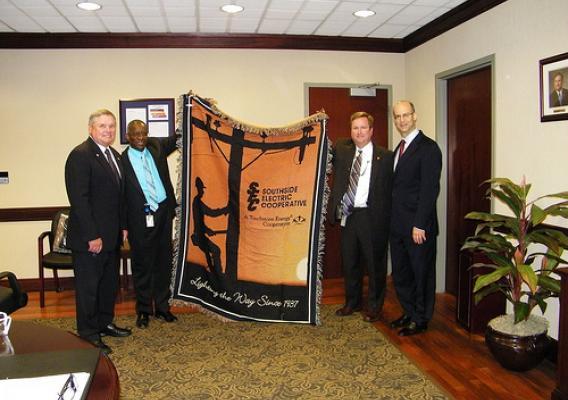Since its humble beginnings over 75 years ago, the Southside Electric Cooperative (SEC) in Virginia has provided reliable and affordable electricity to its 18-County service area located South of Richmond, the State Capital.
Yesterday marked a milestone for the electric coop with the announcement by Jonathan Adelstein, the Rural Utilities Administrator, of over $44.8 million dollars in guaranteed loan assistance. This will be the largest single loan and expansion project ever taken on by the cooperative.
“The guaranteed funding through the RUS Program will enable us to complete key projects that will improve reliability, customer service, and give us additional capacity to meet future load requirements which assist our local communities with economic development,” said Jeff Edwards, SEC President and CEO. He went on to say, “An exciting part of this expansion will be the implementation of Smart Grid Technology. This will allow for customers to actually monitor their power usage and help conserve electricity during peak times of the day.”









